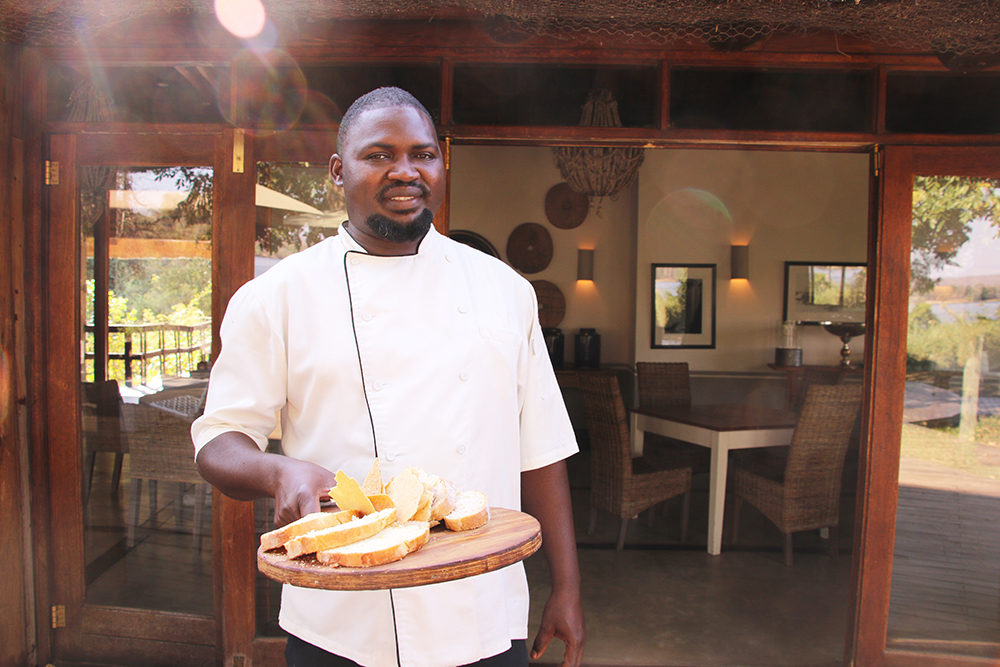
What is it about the baobab that moves people so? It feels wrong to gaze upon one of these upside-down trees and not stand in awe, not want to wrap yourself around it. Many of us try – the tree-hugging – but most of us simply look, with that first love, last love, longing. We stand before this great tree of life, of myth and legend, and we feel it in our hearts, in the way Russian poet, Vladimir Mayakovsky wrote… “love tells us, humming, that the stalled motor of the heart has started to work again.”
It is around our ancient baobab (the Adansonia Digitata) on Katombora Island that we have started to gather, sit and dine, while listening to the wild things of our river flutter and sing and jump.
Surrounded by the python creepers and in the company of 2000-year-old jackalberries, we share in the tastes of Zambia. The gin flows like the Zambezi and in between the whirl of wine, wilderness and chatter, we stop to look up. To ponder. We think of all those stories that have been told not just under baobabs, but about them too…
The stories the Bushmen have told…
Since small baobabs look very different to adult ones, and more like regular small trees, the Bushmen believed the adults don’t grow, but rather fall to the ground, fully grown. The Bushmen saw the baobab as a magical tree because when it dies it appears to simply collapse in the course of a day – due to the rotting process that occurs inside the tree.

African legend also has it that, many years ago, when animals and people were created, God gave each of them a tree. The hyena came last and was given the baobab. Displeased by this, he, out of spite, planted the tree upside down with the roots sticking out from the top. Another version states that the hyena was late and only the baobab was left to give as nobody else wanted it. Full with anger, the hyena planted the tree upside down. Read more here.
Besides their mystery, baobabs are also such significant figures in Africa because of their use to man and animal. Here in Zambia, locals use the fibers of the bark to make cloth, baskets, mats and ropes. We boil the leaves and pick the green fruits for eating, as they are rich in Vitamin C and A. We use the oil as a moisturiser, applying it to our skin or baths.

Above: Baobab fruit featured in our new tasting menu
Birds and fruit bats use the tree’s branches to build their nests, elephants munch on the fibrous bark, bats and baboons guzzle up the fruits and snakes slither into the hollows.
And while we laze beneath our baobab, we recall its lessons: that life is long, we recall its reminders: keep going, sit awhile and revel, mellow, in life’s sweetness. We move from table to crackling campfire or Persian rug, and keep the mingling, mind-delving and memory-sharing going.

The birds and baboons visit, and all we can think of is how none of this, these life moments, would be what they are without the presence of the wild and woods, without the nature let to roam and sing and dance. We remember the health and happiness of the earth is imperative to our own and before one last sip of bliss, and that let’s do this for eternity feeling, we remember just why we love baobabs so much. Because they have a way of bringing us together, of stopping time and starting life.

Contact us if you’d like to join us, under the baobabs, on our special Zambezi River island…














